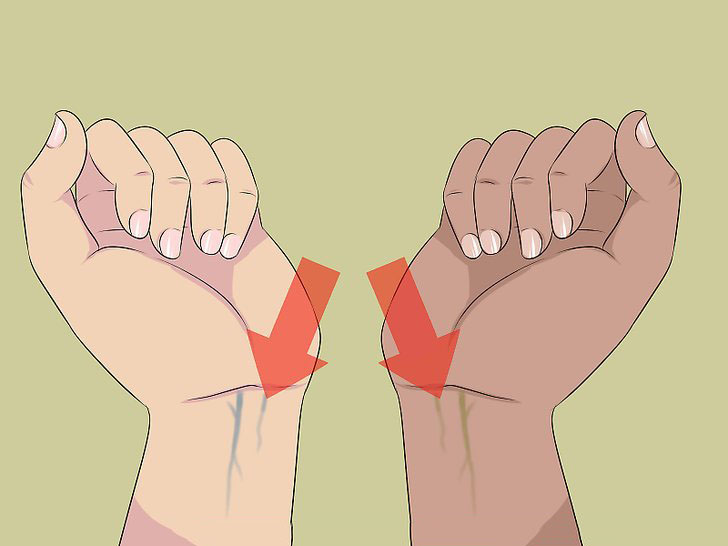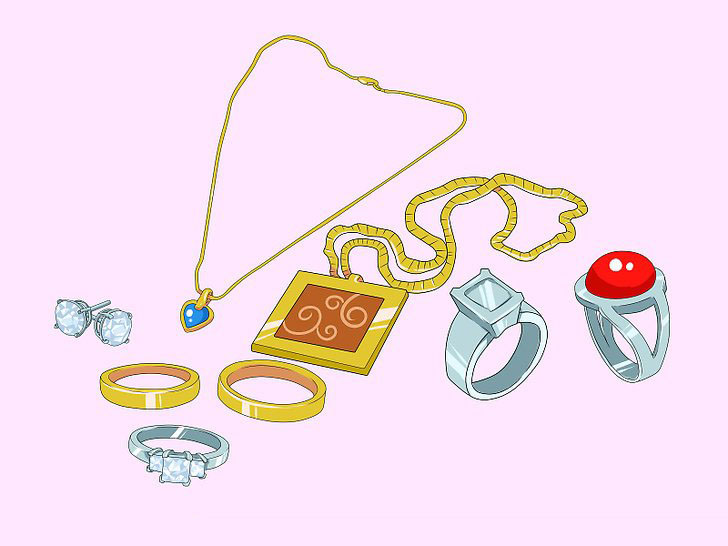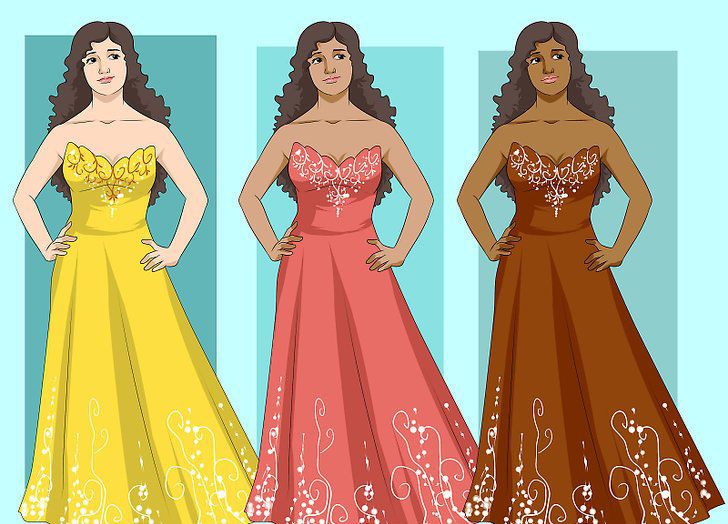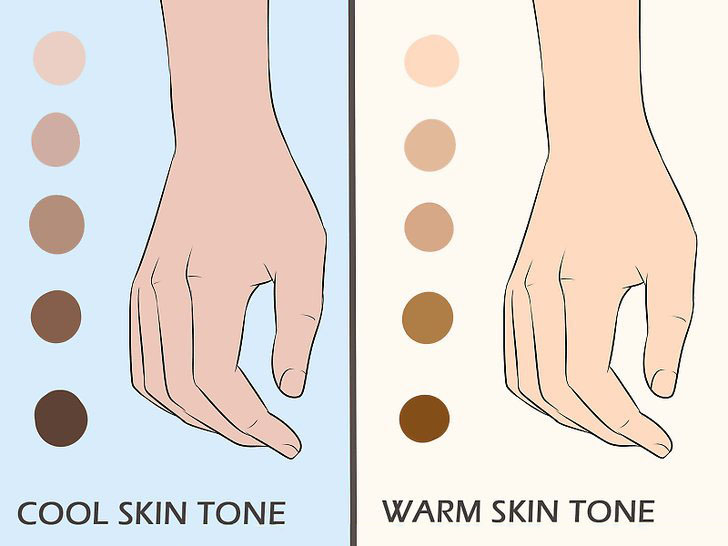Unlike a wedding dress, prom dresses come in many different colors and styles! One thing to consider when buying a prom dress is picking a color that best suits you. Choosing the right prom gown in a color that's flattering to your skin tone and eye color will help you stand out on prom night.
Method 1 Determining your Skin Tone

1. Analyse your skin's surface tone and undertone.
Your skin tone is the surface color of your skin and is usually the word you use to describe your skin color (ex. Ivory, light, medium, dark). Your skin’s undertone is the color underneath the surface. It is possible to have the same surface skin tone as someone, but different colored undertones. When shopping for a dress you should take both the surface tone and undertone into consideration. [1]
Undertones are typically broken down into three categories: cool (pink, red, or bluish), warm (yellow, peachy, golden), or neutral (a mix of warm and cool).

2. Look at the color of your veins.
One way to determine your undertone is to look at the color of your veins. Roll up your sleeve and look at the veins on your wrist. Do they look blue or green? If your veins look blue you likely have cool undertones and if they look green you likely have warm undertones. [2]

3. Take a closer look at the irises of your eyes.
Your eye color can also help determine your undertones. If you have blue, gray, or green eyes you likely have cool undertones. Alternately, if you have brown, hazel, or amber eyes you likely have warmer undertones. [3]

4. Try on silver and gold jewelry.
Typically people with cool undertones look better in silver jewelry and people with warm undertones look better in gold jewelry. Which do you prefer on your skin tone? [4]

5. Determine how your skin reacts in the sun.
Another way to figure out the undertones of your skin is to see how your skin reacts to sun. If you burn easily you likely have cool undertones. If your skin tans in the sun you likely have warm undertones. It is possible to have light skin and warm undertones in the same way that you can have dark skin and cool undertones. [5]
- People with fair skin color who burn likely have cool undertones.
- People with medium/dark skin color who burn and then tan likely also have cool undertones.
Method 2 Complementing You Surface Tone

1. Choose bold colours if you have a dark skin tone.
Bold and bright colors will really pop and complement your skin tone. Try jewel tones, such as turquoise, and emerald green. Pastels are another good choice and will make you stand out in a crowd. [6]
- Avoid black and other deep tones.

2. Pick pastels for a light skin tone.
- If you have a light or fair surface tone without freckles it is suggested that you try pastels. For example, pastel blue, mint green, periwinkle, baby pink, and heather gray will all complement your skin tone nicely. [7]

3. Decide on earth tones and metallics for medium-colored skin.
If your skin tone is often described as olive you likely have a medium surface tone. You will look best wearing earth tones and metallics. [8]
- For example, try gold, forest green, brown, mustard yellow, and cranberry red.
Method 3 Choosing a Color Based on Undertone

1. Choose earthy colors for warm undertones.
If you have decided that you have warm undertones the colors that will look best on you belong to the earth tone family. These include yellows, reds, and browns. [9]
- Avoid icy shades and jewel tones.

2. Try blues, purples and greens for cool undertones.
If you discover undertones of blue, pink, rose or purple, you're considered to have a cool skin tone. People with cool undertones look best in blues, purples, or greens. [10]
- Avoid oranges and yellows.

3. Determine your dress color based on a combination of surface tone and undertone.
When you are deciding on your dress color it is important to keep in mind that your skin has both a surface tone and undertone. You could have dark warm skin or dark cool skin. Similarly, you may have light warm skin or light cool skin. Typically the surface tone will help you determine the shade of colour and your undertone will help you decide on the color itself.
- For example, if you have dark skin you will look good in bold colours. If you have dark warm skin you may want to choose a bright yellow or red to compliment the warm undertones. If you have dark cool skin you will look best in a bright blue or silver.
Method 4 Picking What You Like

1. Look through your wardrobe.
If you're still at a loss for which colors will be most flattering for you, think back to the items in your wardrobe that have earned you the most compliments. Do people comment on how flattering a certain shirt or jacket is on you? Or do you get rave reviews every time you wear a particular scarf or accessory?
- Look for common color trends among your favorite pieces – if all your compliment-worthy articles are red, it's safe to assume that this color will be a good pick for your prom dress.

2. Try on dresses in different colours.
Now that you have determined your skin’s tone and undertone and have discovered which colors look best on you it is a good idea to try on a variety of these colors to see which one you like the most. Typically one dress and color will stand out among the rest and really make you pop. You will only be able to find this look by trying on lots of dresses!
- Avoid having your mind set on one color. It is a good idea to try on a variety of colors. You never know what you will find.

3. Shop with a friend or relative.
It is always a good idea to bring someone with you when you are shopping for your prom dress. They can provide their opinion and let you know which dress and color looks best on you. Asking a sales associate their opinion is another great idea. They are very familiar with the products in the store and can help with narrowing down your selections. [11]





